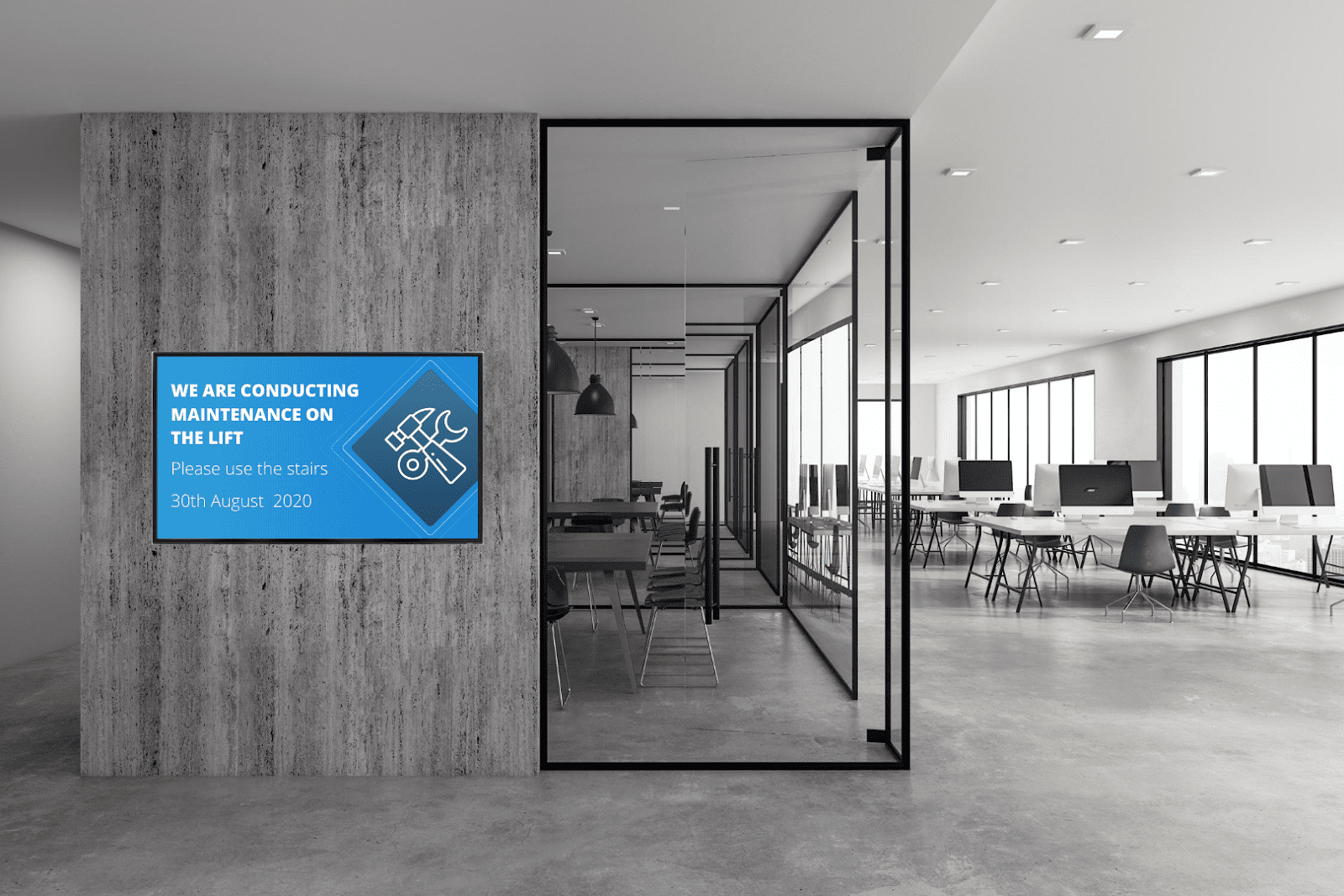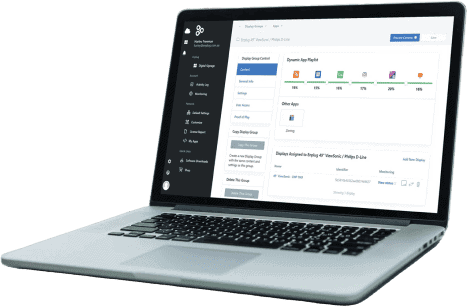
How to Create Digital Signage Content for Your Business
Digital signage has become commonplace in businesses around the world, and it’s no surprise. This forward-thinking way of advertising and delivering information has nearly unlimited uses. From the self-service kiosk at your local McDonald’s to watching promotional footage on 10ft screens in the bank, it’s everywhere. There are even digital signage solutions for hand sanitizer stations – a new essential in the post COVID world.
However, the most important part of digital signage is the content featured on it. So as a business, how can you create digital signage content that engages and captures your audience? Here’s what you need to know.
What is Digital Signage Content?
Digital signage content can consist of anything from graphics and videos, a business directory, social media tickers, news feeds, and more. The next time you go out, try to take note of all the different types of digital signage we have around us. There’s more than you might think.
How to Use Digital Signage
Digital signage works for any kind of business. It isn’t just for those wanting to market themselves to prospective clients. Namely, it can also be used to help streamline business operations. For example, you can use them outside meeting rooms to show if a room has been booked and allow staff easy access to booking using tech like QR codes. They can also be used for in-office announcements, displaying live data, and much, much more.

For marketing, you can create corporate templates to showcase your businesses products and services, introduce your newest staff members to customers, promote events, or even have it as a lead capture solution, teaming it with an interactive process that requires the user to input their email address.
For example, at the Statue of Liberty Museum in New York, there’s a huge interactive piece of digital signage. It has multiple kiosks surrounding a large screen that prompt visitors to put in some basic info and their country. It then takes their picture which is uploaded and featured on the large interactive display in front of them in minutes. You see all the names, faces and countries come together to make a huge Statue of Liberty collage.
Why Digital Signage is Important
As we mentioned before, digital signage not only helps marketing efforts, it can streamline company processes to help businesses become more efficient. Signage can also be used to keep staff motivated, especially if you’re a business with sales targets and KPIs. These can be displayed for all to see.
Digital signs can help to communicate safety alerts, live updates, and important information, for example, if there’s a fire drill or another emergency on the premises.

They also reduce perceived wait times for customers if they're waiting in line to see someone, which results in overall better customer experience.
From a marketing perspective, digital signage is important because in a world with so much advertising noise, businesses constantly need to find ways to get noticed. What better way to do this than by communicating to those who you already have in-house?
Digital signage allows customers to be more engaged with your products or services. It can even capture leads you may not normally have been able to get, especially if your signage displays something unique and creative. Also, as with any tech-based product, you can test and analyze the fruits of your labor, changing signage and design in a moment’s notice if needed.
How to Create Digital Signage Content
Digital signage content is created in a similar way to how you’d create any other content that you might put on your website, social media channels, or traditional ads. It’s always best practice to have a solid content strategy in place for your digital signage as well as an idea of who you’re trying to target with each campaign.
Keep your content concise and simple. That way, viewers will be able to take more in even if they’re just walking by. Use contrasting colors and don’t use too many colors in one piece of content or you’ll lose legibility. In fact, you should consider using the 60/30/10 rule with each piece of content, with 60% being the main color of your brand, 30% being a secondary color and 10% as an accent.
Text content should always be simple, short and sweet. Use a typeface that’s easy to read and make use of large, captivating headlines that will encourage lead conversions.
Be creative and consider developing something interactive that users can get involved in like we described in the example from New York. Don’t forget to make it accessible for all and have any contact points around 36 to 42 inches from the ground. Encourage people to follow you on social media by displaying a QR code that they can scan to access your page and then ask them to post with certain hashtags – you can even incentivize it with a prize. Either way, be sure to use a CTA (call to action) any time you make a request to your audience.
You should also use plenty of multimedia and video. Hubspot reports that 85% of consumers want to see more video in marketing in 2020. Video is easier to digest than written content and you can usually get more information across than you normally would.
Lastly, your CMS (content management system) should be cloud-based so you can access it remotely from any device on the fly. Then, you can change/access information and updates as you need to and automatically back things up and easily.
Is Digital Signage a Necessary Development for my Business?
Digital signage is set to be worth over $26 billion by 2027, showing a compound growth rate of 6.7%, with the APAC region expected to have the fastest growth. Your business can't afford to be left behind the curve. Reach out to our digital signage experts today so we can find the ideal solution for your business.
